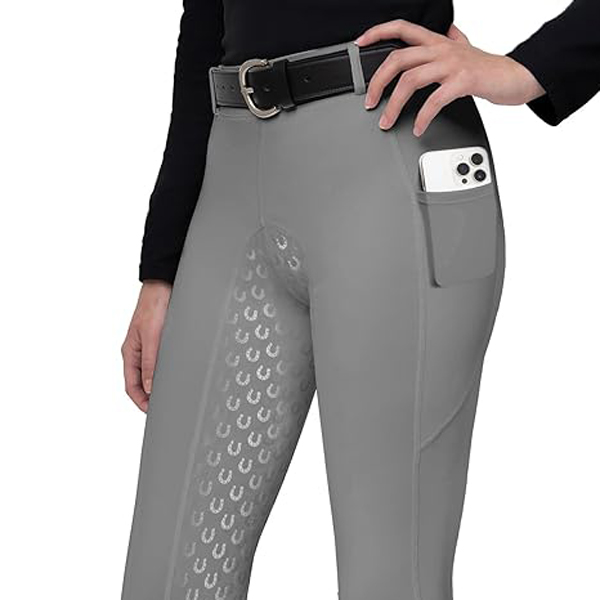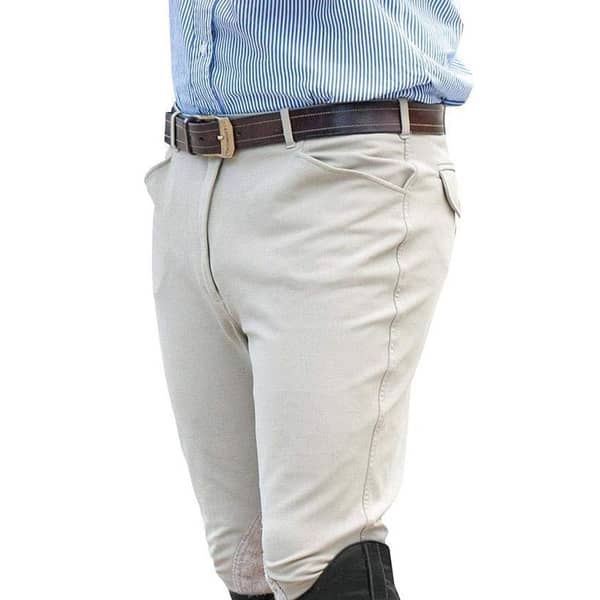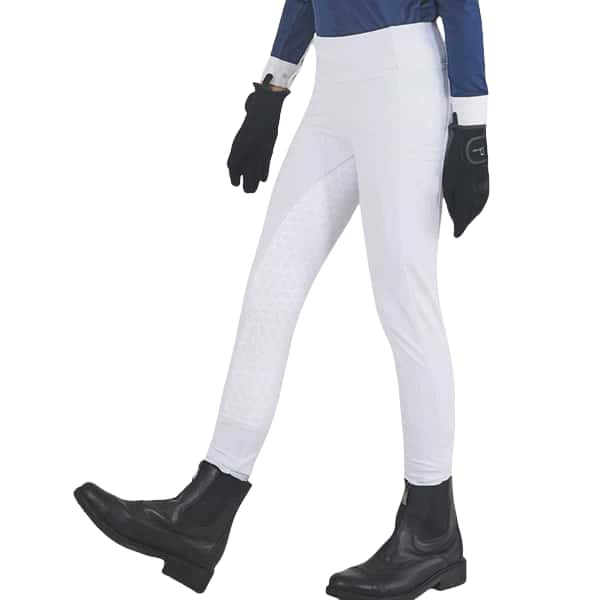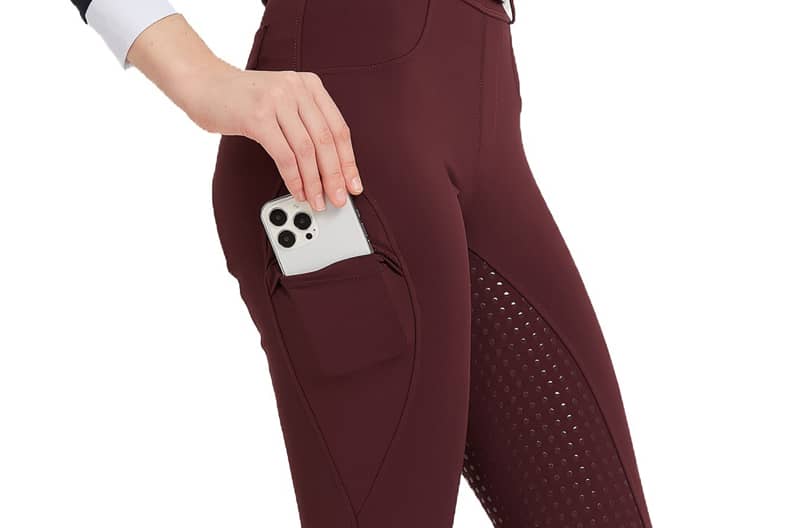| Key Metric | 2024 Data | Growth Projection |
|---|---|---|
| Global Market Size | $6.84 billion USD | $10.5 billion by 2032 |
| Annual Growth Rate | 5.52% CAGR | Steady 5-year trend |
| Startup Investment | $2,400 – $12,200 | Lower barrier to entry |
| Participation Growth | 15% increase over 5 years | Expanding customer base |
Starting an equestrian clothing business has never been more promising. Furthermore, the global market shows consistent growth while startup costs remain surprisingly affordable. This comprehensive guide, developed with insights from industry experts including manufacturers like Zest Equestrian, will walk you through every step of launching your equestrian apparel brand.
1. Market Opportunity Overview
Understanding the Growing Market
The equestrian apparel industry represents a stable and growing market with unique characteristics. Moreover, recent data shows the global market valued at $6.84 billion in 2024 and projected to reach $10.52 billion by 2032. Additionally, this represents a solid 5.52% compound annual growth rate (CAGR).
According to industry research, "customization and fast delivery are becoming the top priorities for equestrian brands seeking competitive advantage in 2025." This trend creates excellent opportunities for new businesses that can offer personalized solutions.
Market Insight:
Growing Market & Steady Growth: The equestrian apparel market was valued around $2.8–3.4 billion in recent years and is expected to rise steadily with a CAGR of approximately 2–5.5% over the next 5–10 years. This consistent growth indicates a healthy, sustainable market for new entrants.
Key Growth Drivers
Several factors contribute to this positive market outlook. First, equestrian participation has increased 15% over the past five years. Second, riders increasingly demand performance-oriented apparel with technical features. Third, the fashion crossover appeal expands the customer base beyond traditional riders.
Furthermore, e-commerce growth enables direct-to-consumer sales worldwide. Meanwhile, social media platforms help brands reach targeted audiences effectively. Consequently, new brands can compete with established players more easily than ever before.
2. Fast-Track Startup Guide
30-Day Action Plan
Starting your equestrian clothing business requires strategic planning and organized execution. Therefore, here's a proven 30-day roadmap to get your business moving quickly.
Week 1: Market Research & Validation
- Identify your target discipline (dressage, show jumping, western riding)
- Survey potential customers through online equestrian communities
- Analyze competitor pricing and product offerings
- Document unmet needs and market gaps
Week 2: Business Foundation
- Choose your business structure (LLC, corporation, sole proprietorship)
- Register your business name and secure domain
- Open business bank accounts and establish credit
- Create basic brand identity and logo concepts
"The biggest mistake new equestrian brands make is rushing into production without proper market validation. Smart entrepreneurs test their ideas with real riders first." — Sarah Mitchell, Equestrian Industry Consultant
Essential First Steps Before Spending Money
Before investing in sample development, successful entrepreneurs validate their concepts thoroughly. Moreover, this approach saves thousands of dollars in potential mistakes.
Start by creating detailed customer personas for your target market. Next, design basic concepts using affordable design software. Then, share these concepts with potential customers for feedback. Finally, refine your ideas based on real user input.
Industry Insight:
Distinct Branding & Niche Positioning is Key: Because the equestrian apparel space has established players, you'll need a well-defined niche (e.g., discipline-specific like dressage or show jumping, beginner vs competitive, eco-luxury vs budget, fashion crossover vs hardcore performance). Strong visual branding, story/mission, and clear target audience will help you stand out.
3. Finding Your Profitable Niche
Market Gap Analysis
Successful equestrian clothing businesses identify specific market gaps rather than competing directly with established brands. Therefore, analyze where current offerings fall short of customer needs.
Consider these promising niche opportunities: size inclusivity (plus-size or petite riders), sustainable materials (eco-conscious consumers), adaptive clothing (riders with disabilities), or multi-discipline versatility (riders who participate in multiple equestrian sports).

Женские бриджи для верховой езды
Performance and style combined

Мужские бриджи для верховой езды
Tailored fit for male riders

Детские бриджи для верховой езды
Growing market segment
Validation Strategies
Once you identify potential niches, validate demand systematically. First, create surveys for equestrian Facebook groups and forums. Second, attend local horse shows to speak directly with riders. Third, analyze search volume for niche-related keywords using tools like Google Keyword Planner.
Additionally, consider pre-order campaigns to test market response. For example, create mockups of your concepts and offer limited-time pre-orders. This approach validates demand while generating initial funding for production.
Market Insight:
Demand for Performance & Tech Fabrics: Riders want fabrics with features like moisture-wicking, UV protection, temperature regulation, durability, and stretch. Additionally, "smart textiles" are emerging as a growing trend in equestrian apparel.
4. Smart Manufacturing Strategy
Understanding OEM vs ODM Manufacturing
Choosing the right manufacturing approach significantly impacts your equestrian clothing business success. Therefore, understanding the difference between OEM (Original Equipment Manufacturing) and ODM (Original Design Manufacturing) is crucial.
OEM manufacturing involves providing your own designs and specifications to a manufacturer. Conversely, ODM manufacturing means working with manufacturers who provide design services alongside production. For new brands, ODM services often provide better value and expertise.
Why Manufacturing Partnerships Matter
Partnering with experienced manufacturers offers several advantages over attempting in-house production. First, established manufacturers have proven supply chains and quality control systems. Second, they understand technical requirements for equestrian apparel performance.
Industry Insight:
Asian OEM/ODM Cost Advantages: Asian OEM/ODM partners offer up to 60% cost savings per unit and 50% lower MOQs compared to European manufacturers, enabling Western brands to launch limited editions and reduce inventory risk.
Moreover, working with specialists in fabric sourcing ensures access to performance materials. Additionally, experienced manufacturers provide guidance on safety certifications and compliance requirements.
Fabric Selection Guide
Different equestrian disciplines require specific fabric characteristics. For example, dressage riders need elegant fabrics with four-way stretch. Meanwhile, cross-country riders require durable, weather-resistant materials with protective features.
Consider these fabric priorities: moisture-wicking properties for active riders, UV protection for outdoor disciplines, breathability for warm climates, and stretch recovery for long-term durability. Furthermore, sustainable fabric options appeal to environmentally conscious consumers.
5. Financial Planning & Pricing
Detailed Startup Cost Calculator
Understanding realistic costs helps you plan your equestrian clothing business budget effectively. Therefore, here's a comprehensive breakdown of typical startup expenses.
| Expense Category | Low Range (£) | High Range (£) | Notes |
|---|---|---|---|
| Pattern making & tech packs | $600 | $1,800 | Professional design services |
| Sample production | $1,200 | $3,600 | Fabric + labor costs |
| Branding & web design | $600 | $2,400 | Logo, website, packaging |
| Marketing launch | $600 | $3,000 | Ads, PR, influencer partnerships |
| Total Investment | $3,000 | $11,000 | Initial launch costs |
Profit Margin Expectations
Equestrian clothing businesses typically enjoy healthy profit margins due to specialized materials and niche positioning. Moreover, premium positioning allows for markup strategies that general apparel cannot achieve.
Expect gross margins of 40-60% on direct-to-consumer sales. Additionally, wholesale margins typically range 25-35% depending on your distribution strategy. Furthermore, safety products often command higher margins due to certification requirements.
Market Insight:
Small-Batch Customization Advantage: Small-batch customization and branding have become essential for niche equestrian labels and wholesalers seeking variety, agility, and differentiation in a homogenized market. This approach enables higher margins and customer loyalty.
6. Product Development Process
From Concept to Prototype Timeline
Successful equestrian clothing business development follows a structured timeline. Therefore, understanding each phase helps manage expectations and budgets effectively.
Phase 1: Concept Development (2-3 weeks)
- Create detailed design sketches and specifications
- Research fabric options and performance requirements
- Develop technical specifications for manufacturers
- Finalize color palettes and sizing ranges
Phase 2: Technical Development (3-4 weeks)
- Work with manufacturers to create detailed tech packs
- Source appropriate fabrics and trims
- Develop grading rules for different sizes
- Plan production methods and quality standards
Tech Pack Essentials
Professional tech packs ensure your vision translates accurately into finished products. Moreover, detailed specifications prevent costly misunderstandings with manufacturers.
Include these essential elements: detailed measurements for all sizes, construction methods with seam specifications, fabric specifications including weight and stretch properties, and quality standards with acceptable tolerances.
"The difference between amateur and professional equestrian brands shows clearly in their tech packs. Detailed specifications save months of back-and-forth revisions." — Michael Chen, Technical Designer
Testing and Iteration Best Practices
Quality testing distinguishes successful brands from failed ventures. Furthermore, thorough testing prevents expensive recalls and reputation damage.
Conduct wear testing with actual riders in various conditions. Additionally, perform wash testing to ensure colorfastness and dimensional stability. Moreover, test durability through repeated use cycles and stress testing.
7. Launch & Scale Strategy
Pre-Launch Validation Tactics
Smart equestrian clothing business owners validate their products before full-scale launch. Therefore, consider these proven pre-launch strategies to minimize risk and maximize success.
Start with limited pre-orders to gauge actual demand versus survey responses. Additionally, partner with local riding schools for pilot testing programs. Furthermore, attend equestrian trade shows to gather professional buyer feedback.
According to recent industry analysis, "brands that conduct thorough pre-launch validation see 40% higher first-year sales compared to those that rush to market without testing." This statistic underscores the importance of methodical market entry.
Marketing Channels That Convert
Effective marketing for equestrian apparel requires understanding where riders discover and purchase products. Moreover, successful brands use multi-channel approaches rather than relying on single platforms.
Digital Marketing Priorities:
- Search Engine Optimization for discipline-specific keywords
- Social media marketing on Instagram and Facebook equestrian communities
- Influencer partnerships with competitive riders and trainers
- Email marketing to nurture leads and announce new products
Market Insight:
Strong Role for E-Commerce and Direct-to-Consumer (DTC) Models: Online retail is increasingly dominant. Brands are using websites, social media, virtual fitting tools, and digital marketing to reach riders globally, making geographic boundaries less relevant for new businesses.
Building Wholesale Relationships
Wholesale partnerships accelerate growth by placing products in established retail locations. Furthermore, working with retailers provides valuable market feedback and credibility.
Target independent tack shops first, as they often support emerging brands more readily than large chains. Additionally, consider online equestrian retailers who specialize in curated product selections.
Market Insight:
Fashion/Lifestyle Crossover Expanding Customer Base: The equestrian look is not just for function anymore; it's becoming a fashion/lifestyle segment. Riding gear that looks good off-the-horse and equestrian-adoptable pieces are appealing to broader audiences.
8. Legal & Compliance Essentials
Safety Standards by Product Type
Equestrian clothing businesses must understand and comply with relevant safety standards. Moreover, different product categories have specific certification requirements that affect both design and manufacturing processes.
Protective Equipment Standards:
- Helmets must meet ASTM F1163 or equivalent CE standards
- Body protectors require BETA Level 3 or CE certification
- Reflective wear needs EN 20471 visibility standards
- Children's products have additional CPSIA compliance requirements
Working with experienced manufacturers who understand quality control processes ensures compliance while avoiding costly certification delays.
International Selling Considerations
Expanding internationally requires understanding different regulatory environments. Therefore, plan for varying labeling requirements, safety standards, and import regulations across target markets.
Key Compliance Areas:
- Fiber content labeling varies by country and region
- Care instruction symbols must follow local standards
- Country of origin marking affects customs and consumer perception
- Size labeling systems differ between US, UK, and EU markets
"Compliance issues can shut down a growing equestrian brand overnight. Invest in proper legal guidance from day one rather than trying to fix problems later." — Jennifer Walsh, Equestrian Industry Legal Advisor
Intellectual Property Protection
Protecting your brand assets becomes increasingly important as your equestrian clothing business grows. Furthermore, early protection prevents costly legal battles with competitors.
Consider trademark protection for your brand name, logo, and distinctive product names. Additionally, design patents may protect unique aesthetic features of your products. Moreover, distinctive packaging designs can also receive trademark protection.
Conclusion
Starting an equestrian clothing business in 2025 offers excellent opportunities for entrepreneurs who understand the market and execute strategically. Moreover, with startup costs as low as $2,000 and a growing global market worth $6.84 billion, the barriers to entry remain manageable for dedicated business owners.
Success depends on thorough market research, strategic niche positioning, and quality manufacturing partnerships. Additionally, focusing on customer validation before large investments prevents costly mistakes that sink many apparel startups.
The equestrian market rewards brands that understand rider needs, deliver consistent quality, and build authentic relationships with the riding community. Furthermore, emerging trends like sustainable materials, customization options, and fashion crossover appeal create new opportunities for innovative brands.
Ready to start your equestrian clothing business? Contact Zest Equestrian to discuss how our 16+ years of OEM/ODM manufacturing expertise can help bring your vision to life. Our team specializes in helping equestrian brands develop high-quality, market-ready products from concept through final delivery.
Whether you need assistance with sample development, sustainable fabric sourcing, or complete private label manufacturing, we're here to support your brand's success in the competitive equestrian apparel market.
Don't let this growing market opportunity pass by. The combination of steady market growth, accessible startup costs, and proven manufacturing partnerships makes 2025 an ideal time to launch your equestrian clothing brand. Take the first step today and join the entrepreneurs already capitalizing on this thriving industry.
External Resources & References
For additional research and industry insights, consider these valuable external resources:
- Global Equestrian Apparel Market Analysis 2024-2032
- US Equestrian Apparel Market Trends Report
- Small Business Administration - Business Plan Guide
- US Trade.gov - Textile Manufacturing Guidelines
- CPSC Children's Product Safety Requirements
- ASTM F1163 Equestrian Helmet Safety Standards
- Shopify's Complete Guide to Starting a Clothing Line
- Sustainable Fashion Supply Chain Trends 2024
- Understanding Gross Margin in Retail Business
- British Equestrian Federation - Industry Resources

